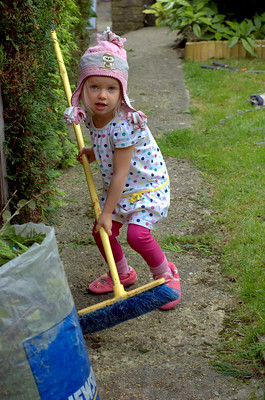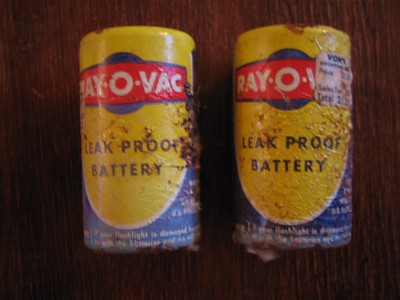Archive for the ‘Fundementals’ Category
Radical Cost Reduction and Reinvented Supply Chains
 As geopolitical pressures rise, some countries that supply the parts that make up your products may become nonviable. What if there was a way to reinvent the supply chain and move it to more stable regions? And what if there was a way to guard against the use of child labor in the parts that make up your product? And what if there was a way to shorten your supply chain so it could respond faster? And what if there was a way to eliminate environmentally irresponsible materials from your supply chain?
As geopolitical pressures rise, some countries that supply the parts that make up your products may become nonviable. What if there was a way to reinvent the supply chain and move it to more stable regions? And what if there was a way to guard against the use of child labor in the parts that make up your product? And what if there was a way to shorten your supply chain so it could respond faster? And what if there was a way to eliminate environmentally irresponsible materials from your supply chain?
Our supply chains source parts from countries that are less than stable because the cost of the parts made in those countries is low. And child labor can creep into our supply chains because the cost of the parts made with child labor is low. And our supply chains are long because the countries that make parts with the lowest costs are far away. And our supply chains use environmentally irresponsible materials because those materials reduce the cost of the parts.
The thing with the supply chains is that the parts themselves govern the manufacturing processes and materials that can be used, they dictate the factories that can be used and they define the cost. Moving the same old parts to other regions of the world will do little more than increase the price of the parts. If we want to radically reduce cost and reinvent the supply chain, we’ve got to reinvent the parts.
There are methods that can achieve radical cost reduction and reinvent the supply chain, but they are little known. The heart of one such method is a functional model that fully describes all functional elements of the system and how they interact. After the model is complete, there is a straightforward, understandable, agreed-upon definition of how the product functions which the team uses to focus the go-forward design work. And to help them further, the method provides guidelines and suggestions to prioritize the work.
I think radical cost reduction and more robust supply chains are essential to a company’s future. And I am confident in the ability of the methods to deliver solid results. But what I don’t know is: Is the need for radical cost reduction strong enough to cause companies to adopt these methods?
“Zen” by g0upil is licensed under CC BY-SA 2.0.
Three Scenarios for Scaling Up the Work
 Breaking up work into small chunks can be a good way to get things started. Because the scope of each chunk is small, the cost of each chunk is small making it easier to get approval to do the work. The chunk approach also reduces anxiety around the work because if nothing comes from the chunk, it’s not a big deal because the cost of the work is so low. It’s a good way to get started, and it’s a good way to do a series of small chunks that build on each other. But what happens when the chunks are successful and it’s time to scale up the investment by a factor of several hundred thousand or a million?
Breaking up work into small chunks can be a good way to get things started. Because the scope of each chunk is small, the cost of each chunk is small making it easier to get approval to do the work. The chunk approach also reduces anxiety around the work because if nothing comes from the chunk, it’s not a big deal because the cost of the work is so low. It’s a good way to get started, and it’s a good way to do a series of small chunks that build on each other. But what happens when the chunks are successful and it’s time to scale up the investment by a factor of several hundred thousand or a million?
The scaling scenario. When the early work (the chunks) was defined an agreement in principle was created that said the larger investment would be made in a timely way if the small chunks demonstrated the viability of a whole new offering for your customers. The result of this scenario is a large investment is allocated quickly, resources flow quickly, and the scaling work begins soon after the last chunk is finished. This is the least likely scenario.
The more chunks scenario. When the chunks were defined, everyone was excited that the novel work had actually started and there was no real thought about the resources required to scale it into something meaningful and material. Since the resources needed to scale were not budgeted, the only option to keep things going is to break up the work into another series of small chunks. Though the organization sees this as progress, it’s not. The only thing that can deliver the payout the organization needs is to scale up the work. The follow-on chunks distract the company and let it think there is progress, when, really, there is only delayed scaling.
The scale next year scenario. When the chunks were defined, no one thought about scaling so there was no money in the budget to scale. A plan and cost estimate are created for the scaling work and the package waits to be assessed as part of the annual planning process. And as the waiting happens, the people that did the early work (the chunks) move on to other projects and are not available to do the scaling work even if the work gets funded next year. And because the work is new it requires new infrastructure, new resources, new teams, new thinking, and maybe a new company. All this newness makes the price tag significant and it may require more than one annual planning cycle to justify the expense and start the work.
Scaling a new invention into a full-sized business is difficult and expensive, but if you’re looking to create radical growth, scaling is the easiest and least expensive way to go.
“100 Dollar Bills” by Philip Taylor PT is licensed under CC BY-SA 2.0.
How To Complete More Projects
 Before you decide which project to start, decide which project you’ll stop.
Before you decide which project to start, decide which project you’ll stop.
The best way to stop a project is to finish it. The next best way is to move the resources to a more important project.
If you find yourself starting before finishing, stop starting and start finishing.
People’s output is finite. Adding a project that violates their human capacity will not result in more completed projects but will cause your best people to leave.
If people’s calendars are full, the only way to start something new is to stop something old.
If you start more projects than you finish, you’re stopping projects before they’re finished. You’re probably not stopping them in an official way, rather, you’re letting them wither and die a slow death. But you’re definitely stopping them.
When you start more projects than you finish, the number of active projects increases. And without a corresponding increase in resources, fewer projects are completed.
The best way to reduce the number of projects you finish is to start new projects.
Make a list of the projects that you stopped over the last year. Is it a short list?
Make a list of projects that are understaffed and under-resourced yet still running in the background. Is that list longer?
A rule to live by: If a project is understaffed, staff it or stop it.
If you can’t do that, reduce the scope to fit the resources or stop it.
Would you prefer to complete one project at a time or do three simultaneously and complete none?
When it comes to stopping projects, it’s stopped or it isn’t. There’s no partial credit for talking about stopping a project.
If you want to learn if a project is worthy of more resources, stop the project. If the needed resources flow to the project, the project is worthy. If not, at least you stopped a project that shouldn’t have been started.
People don’t like working on projects where the work content is greater than the resources to do the work. These projects are a major source of burnout.
If you know you have too many projects, everyone else knows it too. Stop the weakest projects or your credibility will suffer.
“Circus Renz Berlin, Holland 2011” by dirkjanranzijn is licensed under CC BY-ND 2.0.
It’s good to have experience, until the fundamentals change.
 We use our previous experiences as context for decisions we make in the present. When we have a bad experience, the experience-context pair gets stored away in our memory so that we can avoid a similar bad outcome when a similar context arises. And when we have a good experience, or we’re successful, that memory-context pair gets stored away for future reuse. This reuse approach saves time and energy and, most of the time keeps us safe. It’s nature’s way of helping us do more of what works and less of what doesn’t.
We use our previous experiences as context for decisions we make in the present. When we have a bad experience, the experience-context pair gets stored away in our memory so that we can avoid a similar bad outcome when a similar context arises. And when we have a good experience, or we’re successful, that memory-context pair gets stored away for future reuse. This reuse approach saves time and energy and, most of the time keeps us safe. It’s nature’s way of helping us do more of what works and less of what doesn’t.
The system works well when we correctly match the historical context with today’s context and the system’s fundamentals remain unchanged. There are two potential failure modes here. The first is when we mistakenly map the context of today’s situation with a memory-context pair that does not apply. With this, we misapply our experience-based knowledge in a context that demands different knowledge and different decisions. The second (and more dangerous) failure mode is when we correctly identify the match between past and current contexts but the rules that underpin the context have changed. Here, we feel good that we know how things will turn out, and, at the same time, we’re oblivious to the reality that our experience-based knowledge is out of date.
“If a cat sits on a hot stove, that cat won’t sit on a hot stove again. That cat won’t sit on a cold stove either. That cat just don’t like stoves.” Mark Twain
If you tried something ten years ago and it failed, it’s possible that the underpinning technology has changed and it’s time to give it another try.
If you’ve been successful doing the same thing over the last ten years, it’s possible that the underpinning business model has changed and it’s time to give a different one a try.
“Hissing cat” by Consumerist Dot Com is licensed under CC BY 2.0.
Students, Teachers, and Learning
 If the student has no interest, they are not yet a student and it’s not yet time for learning.
If the student has no interest, they are not yet a student and it’s not yet time for learning.
Learning comes hard, especially when it’s not wanted.
The teacher that tries to teach a student that’s not yet a student is not yet a teacher.
There can be no teacher without a student.
If there’s no doing, there’s no learning. And it’s the same if there’s no theory.
Apprenticeship creates deep learning, but it takes two years.
Learning is inefficient, but it’s far more efficient than not learning.
When you know the student is ready, turn your back so they can see it for themselves.
Objective evidence of deep learning: When students can navigate situations that are outside the curriculum.
“May 14, 2006: Happy Mother’s Day” by Matt McGee is licensed under CC BY-ND 2.0.
The first step is to admit you have a problem.
 Nothing happens until the pain caused by a problem is greater than the pain of keeping things as they are.
Nothing happens until the pain caused by a problem is greater than the pain of keeping things as they are.
Problems aren’t bad for business. What’s bad for business is failing to acknowledge them.
The consternation that comes from the newly-acknowledged problem is the seed from which the solution grows.
There can be no solution until there’s a problem.
When the company doesn’t have a big problem, it has a bigger problem – complacency.
If you want to feel anxious about something, feel anxious that everything is going swimmingly.
Successful companies tolerate problems because they can.
Successful companies that tolerate their problems for too long become unsuccessful companies.
What happens to people in your company that talk about big problems? Are they celebrated, ignored, or ostracized? And what behavior does that reinforce? And how do you feel about that?
When everyone knows there’s a problem yet it goes unacknowledged, trust erodes.
And without trust, you don’t have much.
Helping helps.
 If you think asking for help is a sign of weakness, you won’t get the help you deserve.
If you think asking for help is a sign of weakness, you won’t get the help you deserve.
If the people around you think asking for help is a sign of weakness, find new people.
As a leader, asking others for help makes it easier for others to ask for help.
When someone asks you for help, help them.
If you’re down in the dumps, help someone.
Helping others is like helping yourself twice.
Helping is caring in action.
If you help someone because you want something in return, people recognize that for what it is.
Done right, helping makes both parties stand two inches taller.
Sometimes the right help gives people the time and space to work things out for themselves.
Sometimes the right help asks people to do work outside their comfort zone.
Sometimes the right help is a difficult conversation.
Sometimes the right help is a smile, a phone call, or a text.
And sometimes the right help isn’t recognized as help until six months after the fact.
Here’s a rule to live by – When in doubt, offer help.
“Helping Daddy” by audi_insperation is licensed under CC BY 2.0.
The first step is to understand the system as it is.
 If there’s a recurring problem, take the time to make sure the system hasn’t changed since last time and make sure the context and environment are still the same. If everything is the same, and there are no people involved in the system, it’s a problem that resides in the clear domain. Here’s a link from Dave Snowden who talks about the various domains. In this video, Dave calls this domain the “simple” domain. Solve it like you did last time.
If there’s a recurring problem, take the time to make sure the system hasn’t changed since last time and make sure the context and environment are still the same. If everything is the same, and there are no people involved in the system, it’s a problem that resides in the clear domain. Here’s a link from Dave Snowden who talks about the various domains. In this video, Dave calls this domain the “simple” domain. Solve it like you did last time.
If there’s a new problem, take the time to understand the elements of the system that surround the problem. Define the elements and define how they interact, and define how they set the context and constraints for the problem. And then, define the problem itself. Define when it happens, what happens just before, and what happens after. If there are no people involved, if the solution is not immediately evident, if it’s a purely mechanical, electromechanical, chemical, thermal, software, or hardware, it’s a problem in the complicated domain (see Dave’s video above) and you’ll be able to solve it with the right experts and enough time.
If you want to know the next evolution of the system, how it will develop and evolve, the situation is more speculative and there’s no singular answer. Still, the first step is the same – take the time to understand the elements of the system and how they interact. Then, look back in time and learn the previous embodiments of the system and define its trajectory – how it evolved into its current state. If there has been consistent improvement along a singular line of goodness, it’s likely the system will want to continue to evolve in that direction. If the improvement has flattened, it’s likely the system will try to evolve along a different line of evolution.
I won’t go into the specifics of lines of evolution of technological systems, as it’s a big topic. But if you want to know more, here’s a nice description of evolution along the line of adaptability by my teacher, Victor Fey – The best products know how to adapt.
If there are people involved with the system, it’s a complex system (see Dave’s video). (There are complex systems that don’t involve people, but I find this a good way to talk about complex systems.) The first step is to define the system as it is, but because the interactions among the elements are not predictable, your only hope is to probe, sense, and respond by doing more of what works and less of what doesn’t. Thanks to Dave Snowden for that language.
The first step is always to understand the system as it is.
“Space – Antennae Galaxies” by Trodel is licensed under CC BY-SA 2.0.
Is your project too big, too small, or both?
 When choosing projects there are two competing questions: Is it big enough? And, is it small enough? The project must be big enough to generate the profits required by the company’s growth objectives. Larger growth objectives require larger projects. Yet the project has to be small enough to be completed within the time constraints defined by the growth objectives. Tighter time constraints require smaller projects.
When choosing projects there are two competing questions: Is it big enough? And, is it small enough? The project must be big enough to generate the profits required by the company’s growth objectives. Larger growth objectives require larger projects. Yet the project has to be small enough to be completed within the time constraints defined by the growth objectives. Tighter time constraints require smaller projects.
When the projected revenue generated by the candidate project is less than what’s needed to meet the growth objectives, the project is deemed “not big enough.” But what if the candidate project is the largest project that the project team can imagine? Does that say something about the project team’s imagination or the growth objectives? Open question: How do tell the difference between a project that is too small to meet the growth objectives and growth objectives that demand projects larger than the project team’s imagination?
When the projected launch date of the candidate project is later than the date of first revenue defined in the growth plan, the project plan is deemed “too long.” The team is then asked to sharpen their pencils and return with a launch date that meets the revenue timeline. And when the revised schedule also violates the revenue timeline, the project is deemed “too big.” Open question: How do you tell the difference between a project that is too big to meet the revenue timeline and a revenue timeline that is too stringent to allow a project of sufficient size?
Theoretically, there are candidate projects that are big enough to meet the growth objectives and small enough that their launch dates meet revenue timelines. But in practice, candidate projects are either too small to meet growth objectives or too large to meet revenue timelines. And, yes, I have seen candidate projects that are both too small and too large. But this says more about the growth objectives, revenue timelines, and the number of projects that run concurrently (too few resources spread over too many projects).
Growth objectives are good, and so are projects that fit with the team’s capabilities to deliver. Incremental revenue that comes sooner rather than later is good. And so are project timelines that are governed by the work content, resources applied to the projects, and good product development practices.
Truth is, we need it all – projects that deliver the sizzle that sells and projects that launch sooner rather than later. And year-on-year, we need to get better at delivering on all of it. And the best way I know to do all that is to ritualistically invest in the people that do the work and the tools they use.
“Horse Yin and Yang” by onecog2many is licensed under CC BY 2.0.
It’s time to charge your battery.
 When a car’s battery is low and doesn’t have enough energy to start the car, you change your expectations about travel plans, hook up the battery to a charger and give it the time it needs to charge. You don’t keep trying to start the car because the already tired battery gets more tired. You know the signs – every time you turn the key, the engine turns more slowly and at some point, the slow whirring decays into a clicking of the solenoid.
When a car’s battery is low and doesn’t have enough energy to start the car, you change your expectations about travel plans, hook up the battery to a charger and give it the time it needs to charge. You don’t keep trying to start the car because the already tired battery gets more tired. You know the signs – every time you turn the key, the engine turns more slowly and at some point, the slow whirring decays into a clicking of the solenoid.
People don’t run on batteries, but like batteries, we sometimes run low on cranking power. But where we accept the reality that sometimes a car battery will not start the car, we don’t see the degradation of people’s performance the same way. Sure, the signs are more subtle – reduced ability to concentrate, reduced productivity, variability in output, and the like – but the signs are there for all to see. And where the car simply refuses to start, sometimes people blame themselves for their low battery and over-exert themselves to keep the projects moving, even when it’s not in their best interest.
It’s vacation season. Take the time you need to charge your battery and don’t feel guilty about it. Try to hold onto the fact that you’re not helping things in the long run by blocking yourself from the rest you need now. And, sure, you’re good at your job, but the company can handle things while you’re on holiday. Or, better yet, why not flip it on its head and declare your time away as a growth opportunity for someone on your team to fill in for you and test drive your job?
They will get the chance to interact with different people in the organization and likely get a broader picture of what’s going on at the company. They will get a chance to share their thoughts and ideas, which will feel good, and other leaders will see them in action. It’s a win for everyone.
And while you’re away, don’t check in. That’s just like pulling the plug on the battery charger before it has a chance to do its work.
“Old Ray-O-Vac Batteries” by deanj is licensed under CC BY 2.0.
The Power of Stopping
 If when you write your monthly report no one responds with a question of clarification or constructive comment, this may be a sign your organization places little value on your report and the work it stands for. If someone sends a thank you email and do not mention something specific in your report, this masked disinterest is a half-step above non-interest and is likely also a sign your organization places little value on your report and the work it stands for.
If when you write your monthly report no one responds with a question of clarification or constructive comment, this may be a sign your organization places little value on your report and the work it stands for. If someone sends a thank you email and do not mention something specific in your report, this masked disinterest is a half-step above non-interest and is likely also a sign your organization places little value on your report and the work it stands for.
If you want to know for sure what people think of your work, stop writing your report. If no one complains, your work is not valuable to the company. If one person complains, it’s likely still not valuable. And if that single complaint comes from your boss, your report/work is likely not broadly valuable, but you’ll have to keep writing the report.
But don’t blame the organization because they don’t value your work. Instead, ask yourself how your work must change so it’s broadly valuable. And if you can’t figure a way to make your work valuable, stop the work so you can start work that is.
If when you receive someone else’s monthly report and you don’t reply with a question of clarification or constructive comment, it’s because you don’t think their work is all that important. And if this is the case, tell them you want to stop receiving their report and ask them to stop sending them to you. Hopefully, this will start a discussion about why you want to stop hearing about their work which, hopefully, will lead to a discussion about how their work could be modified to make it more interesting and important. This dialog will go one of two ways – they will get angry and take you off the distribution list or they will think about your feedback and try to make their work more interesting and important. In the first case, you’ll receive one fewer report and in the other, there’s a chance their work will blossom into something magical. Either way, it’s a win.
While reports aren’t the work, they do stand for the work. And while reports are sometimes considered overhead, they do perform an inform function – to inform the company of the work that’s being worked. If the work is amazing, the reports will be amazing and you’ll get feedback that’s amazing. And if the work is spectacular, the reports will be spectacular and you’ll get feedback that matches.
But this post isn’t about work or reports, it’s about the power of stopping. When something stops, the stopping is undeniable and it forces a discussion about why the stopping started. With stopping, there can be no illusion that progress is being made because stopping is binary – it’s either stopped or it isn’t. And when everyone knows progress is stopped, everyone also knows the situation is about to get some much-needed attention from above, wanted or not.
Stopping makes a statement. Stopping gets attention. Stopping is serious business.
And here’s a little-known fact: Starting starts with stopping.
Image credit — joiseyshowaa
 Mike Shipulski
Mike Shipulski